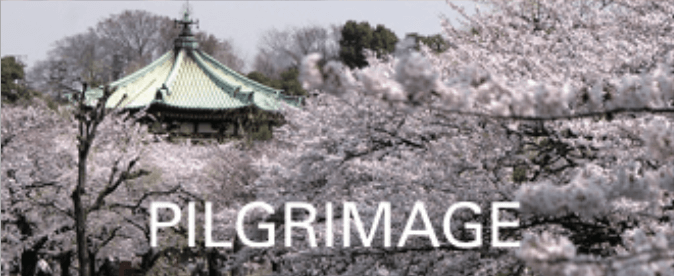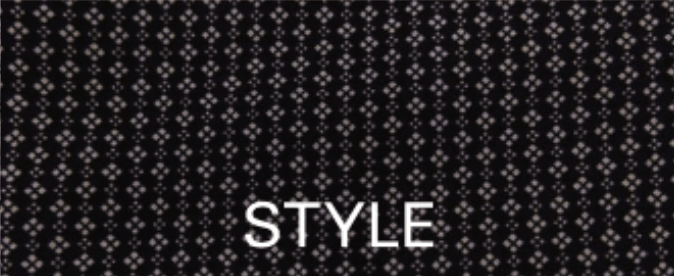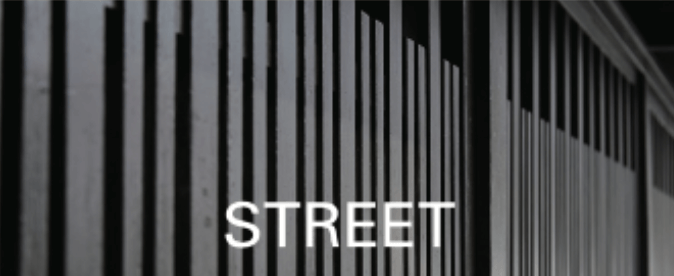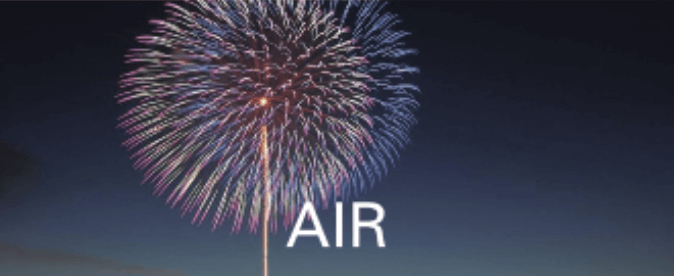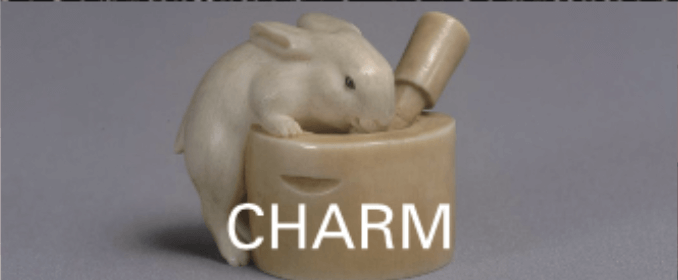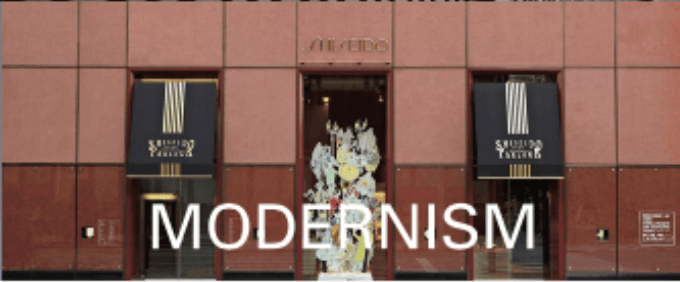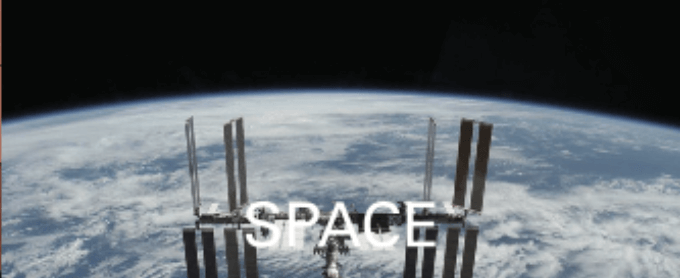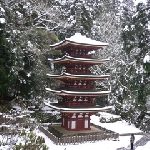
This temple was founded with an Imperial scroll written by Emperor Tenmu (631 – 686). It was built by Kenkyo (714 – 793), a priest of the Hosso sect of Buddhism, of Kofukuji Temple Nara, in the Hakuho era, during Emperor Tenmu and Empress Jito’s reign in the late of the 7th century and the beginning of the 8th century. Later, this temple was popularized as the temple of the Shingo sect, which was Nyonin Koya, a place that permitted women to worship and to practice the unobstructed cultivation of Buddhism.
This complex of temple buildings gently harmonizes with the four seasons of Mt. Murosan, where rocks in the shape of Pentagonal columns and Hexagonal columns stand upright. In particular, the five-storied pagoda built on the high stone steps next to the main temple, has Hiwadabuki, a cypress bark roof and vermilion painted bracket complexes, which creates a special atmosphere in the surrounding greenery.
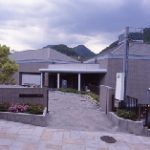
This museum introduces the oldest national highway, Takenouchi Kaido Road. The highway connects to Naniwa harbor, which was built by the order of Empress Suiko (554 – 628) during the Asuka era (592-710). The museum also shows the history of maintaining the way leading to Futakamiyama, an area rich in Sanukite, a material used in stoneware.
The museum introduces the history of the path of the Prince Shotoku (574 – 622) faith, the pilgrimage of Ise Jingu and the pilgrimage of Kannnon, the Buddhist Goddess of Mercy, to 33 temples in Kinki, western Japan. The history of the merchants’path to Yamato and Kawachi Province in Kinki is also introduced.

This museum of Literature approaches the origin of Watsuji Tetsuro (1889 – 1960), a Japanese moral philosopher and cultural historian, who was born in Himeji. This museum displays Harima mandala, a geometric pattern that represents the history of culture in Harima Province, Hyogo.
The mandala gives an overview of the culture and climate of Harima from ancient times to the end of the Edo period (1603 – 1868), using materials and graphics on a 7m high, 60m long semicircular wall.
Along with the permanent exhibition, you can trace the origins of “a sharp and delicate intuition,” “imagination to make great strides,” and “awareness of East and West culture,” which Watsuji showed, at age 29, at the Koji Junrei – A Pilgrimage to Ancient Temples by Watsuji Tetsuro in 1919.
After he saw the reproduction of India’s Ajanta Cave at his friend house, he visited Toshodaiji Temple, Yakushiji Temple, Horyuji Temple, Chuguji Temple, in Nara and other temples near Nara, and wrote down his impressions with passion about the history of the establishment of early Buddhist art from the eastern influence of Greek culture.
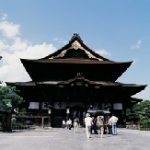
The temple has been worshiped by common people widely and deeply as the place of ties with Amida Buddha, Amitabha, the principle image of Buddha in Pure Land. The statue of Amida Buddha, Amitabha, with 3 three images in a unified halo,”Itsuko Sanzon,”is the principal work at this temple.
It arrived after passing through the Korean Peninsula in 6C. After it was abandoned by Nanba Horie, an anti-Buddhist movement, Yoshimitsu Honda from Shinano, Nagano, brought it back home and enshrined it.
This principal image has been kept hidden for more than 1300 years. The replica of this image, “Omaedachi,” was made in the Kamakura era (1192-1333) and is shown every 6 years in an event called “Gokaicho”.

The movement to abolish Buddhism began after the Imperial decree promoting Buddhism by Empress Suiko (554 – 628). The gilt bronze statue of the Buddha from Baekje, Korean Peninsula was rescued from Horie Naba, Osaka and was brought to Shinano Province by Honda Yoshimitsu. Honda was from Shinano Province, saved the statue, and donated it to his home town. It was enshrined in this Temple.
The Shinhobutsu-den, a treasure hall of this temple, possesses Zakono Usu (Mortar), in which Honda Yoshimitsu enshrined and prayed to the statue, and the wood statue of Buddha Nehan, the image of the Buddha immediately after his death. This is one of only a few such statues in Japan.
This hall also introduces “Kanzan Jutoku Zu” – Portraits of Kanzan Jutoku, two eccentric monks that have been regarded as incarnations of Fugen and Monju Bosatsu, Bodhisattvas, in the Tang Dynasty period”, by Sesshu Toyo (1420 – 1506), a Zen monk and a master ink painter in Japan.
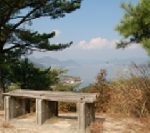
The principal image of Kojoji Temple is the statue of the Sacred Kannon, the Buddhist Goddess of Mercy. The statue was made by a Buddhist priest, Tocho Ritsushi, who traveled from the Tang Dynasty (618 – 907) and is Hibutsu, a hidden Buddhist image, ordinarily withheld from public view. The National Treasure, the vermilion three-storied pagoda, was built in the traditional Japanese-style architecture as its base. It also draws on the elements of the traditional Chinese-style architecture, which gives a strong impression with its colors and powerful engraving. The newel posts at the four corners are decorated with inverted lotus shapes, which are unique.
You can overlook Setoda Channel from Mt. Choonzan, where the tower is built. The Setoda Channel from Mt. Choonzan is the scenery that Hirayama Ikuo (1930 – 2009), a Japanese painter, overlooked in his childhood days.
Later, Hirayama painted the magnificent wall painting of “The Great Tang Dynasty of the Western Regions” at Yakushiji Temple Nara, dedicated to Genjo Sanzo (602 – 664), a Chinese monk who travelled to India and was the author of “The Great Tang Dynasty Record of the Western Regions”, and the founder of the Hosso sect of Buddhism.

This museum is affiliated with the temple built by Kosanji Kozo (1891 – 1970), a monk. It was a temple where religious rites for the salvation of the departed soul of his mother could be performed.
This museum introduces valuable collections: a Mirror with a plate-rim and a design of Figures of Deities and Divine Beasts from Mochida ancient Burial Mounds during the 5th and 6th centuries, in Miyazaki. It was estimated that these were casted in the days of the Six Dynasties in China, during the 3th and 6th centuries.
It was designed as – Deities and Divine Beasts to be seen from a single angle at the top and bottom, surround Chu, finger grip in the center, and a semicircle and square pattern surround the outside of the mirror. The design symbolizes the concept of Taoist immortality.
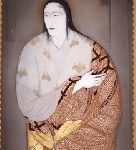
This is a temple of the Hongaji School of odo-Shin sect (True Pure Land sect), which was built by Kosanji Kozo (1891 – 1970), a monk and a businessman. A complex of temple buildings was modeled after a National Treasure building and had an attached museum. The sculptures exhibit the flow of Buddhist statues and modern sculptures from the Heian period (794 – 1185) to the Showa period (1926 – 1989).
The museum possesses paintings, including Buddhist paintings from the Kamakura period (1185 – 1333) and modern paintings. You must see the tea ceremony art. The contemporary garden, a marble garden called “Mirai no Oka,” reflects the affection of a mother with the transient beauty of Japan.
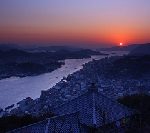
The observatory at Mt. Jodojiyama has the best view in Onomichi City, which overlooks the Seto Inland Sea and sometimes the distant Shikoku Mountains can be seen. This temple is at the foot of the mountain, which is said to have been founded by the Prince Shotoku (574 – 622). It enshrines the statue of an eleven-faced Kannon, the Buddhist Goddess of Mercy.
The scene in the evening sun from this observatory is truly the scene of Pure Land. It is this Buddhism that was transmitted to Japan that provided its dependents with the sentiment of the pathos in the Japanese archipelago, which continues to pass, with nature and climate.

There is Jogyo-do, a hall for Nenbutsu, a religious practice of chanting the text of the hope for rebirth in Pure Land. The principal image is the wood standing statue of Amida, Amitabha, the principal image of Buddha in Pure Land. This statue was made using Yosegi zukuri, the technique of assembling wood blocks, after they were treated and carved. The entire statue is made of cypress wood, covered in gold leaf on Japanese lacquer, and has Gyokugan, eyes made of inlaid crystals. This statue is a standing statue, with a stole draped on both shoulders, which makes Raigo-in, a symbolic gesture with the fingers welcoming the Pure Land.
This statue has ink writing at the doweling of the sole of the foot, which is inscribed “Kosho Hogen Kaikei Kenreki Gannen Sangatsu Niju Hachi Nichi.” It is signed on March 28, 1221, by Kaikei, The Master and the second highest rank in the hierarchy of Buddhist priests. It shows that this statue was made in 1221 by a sculptor of great Buddhist images. Kaikei was from the Kei school during the Kamakura period (1185 – 1333). Documents stored inside the statue were found, which explained the circumstances for Kaikei to decide to make this statue.
The standing statue of Amida began with Kaikei for the first time in the world.

This temple was founded by Gyoki (668 – 749), a Japanese Buddhist priest, and organizer of public works projects, like irrigation, by the Imperial scroll of Emperor Shoumu (701 – 756), in the Tempyo era (729 – 749) of the Nara period (710 – 794).
Kobo Daishi Kukai (774 – 835), the founder of the Shingon sect, stayed and practiced at this temple, for the foundation of the Shikoku Reijo, the 88 temples of Shikoku as holy sports.
It is said that during his stay here, Kukai realized the landscape of this mountain overlapped the scenery of Mt. Ryojusen in India, where Buddha had preached his teaching. Naruto was the gateway to Shikoku Islands from the Kinai region, provinces surrounding Kyoto and Nara, since ancient times.
Kukai had designated this temple as the first place of Shikoku Reijo.
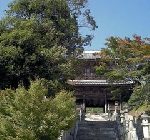
This temple is Okunoin, an Inner sanctuary, of Kotohiragu Shrine, in Kohira Town Kagawa. It tells the history of Shinbutsu-shugo, the syncretism of Shintoism and Buddhism. Goma, a fire ritual, takes place in the main temple and Goma-do Hall and on the all the glorious grounds of Hashikura Prefectural Natural Park.
You can visit this temple at the top of Mt. Hashikura (Height 600 m) by the ropeway from the foot of the mountain in about 4 minutes. You can see the Yoshino River, nicknamed Shikoku Saburo, below you. You can see the magnificent mountain, Mt. Tsurugi with the Shikoku Mountains in front of you.
“Hashi”-kuyo, a memorial service of Chopstick is held in August.
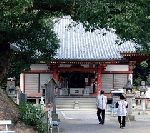
This temple is the 69th temple of Shikoku Reijo, the 88 temples of Shikoku as holy spots, and enshrine the 74cm-long statue of Nehan, the image of the Buddha immediately after his death. The face of the Reclining Buddha was made in Shiraki Yosegi Zukuri, the technique of assembling wood blocks, after being treated and carved, made of white wood with the grain of a board. This is one of the few examples in Japan that show the image of Nehan, in sculpture.
A cute little statue of the Fujiwara era of Kokufu Bunka, Japan’s original national culture (894 – 1185), has a gentle and graceful appearance, which lays on the right side with his head facing north, under Sarasoju, a sal tree, and with its legs overlapped. This statue conveys the moment when Buddha entered Nehan in loneliness.

Sotomemachi Nagasaki is located at Nishisonogi Peninsula northwest of Nagasaki City and is 50 km before the Goto Islands, over the west coast of Sumo-nada Sea. The scenery is a model of the novel “Silence” by Endo Shuusaku (1923 – 1996), a Japanese author.
– Endo wrote as a Japanese Roman Catholic. “Silence” – Rodrigo, an Italian Jesuit priest arrived in Goto Islands in Japan in the 17th century to find the priest renounced his faith, under the decree of the prohibition on Christianity. He was betrayed by Kichijiro, who was an alcoholic fisherman renouncing his Catholic faith, and was imprisoned with many Japanese converts. Eventually Rodrigo heard the voice, after a long silence. And he recognized that “Who can say that the weaker did not suffer more than the stronger?”
This museum is built with the monument that is engraved “Even though humans are so sad, Lord, the sea is so azure”. This museum captured the sea view of Sotomemachi in various places, which Endo described as a landscape to look back on his life alone. The underground Christians used to stay in Sotomemachi and moved to Goto Islands from here during the Edo period (1603 – 1868).
